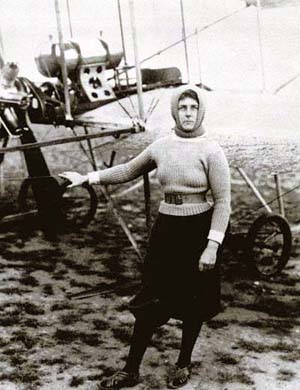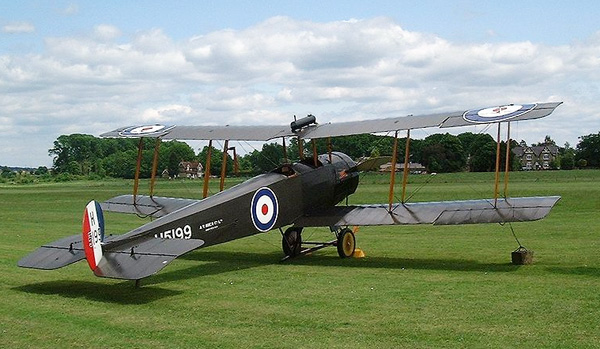Hilda Hewlett
Today, Hilda Hewlett -- not a young daredevil. The University of Houston's College of Engineering presents this series about the machines that make our civilization run, and the people whose ingenuity created them.
The stories of first-women-fliers reveal one adventure-seeking young lady after another. But, when we come to Hilda Hewlett -- first British woman pilot -- the script changes dramatically. Hilda Hewlett was born in 1864 while we were still fighting our Civil War. She was almost 40 when the Wright Brothers flew.
Hewlett spent a year in Germany studying nursing, then returned to England where she married Maurice Hewlett in 1888. Maurice was a lawyer who later became a well-known author of romance novels. The Hewletts avidly took up the new sport of bicycling. Next, she got into automobiles in an age when a man still had to run ahead of her car waving a red flag.
Then she met French engineer Gustave Blandeau in 1909. Blandeau was into everything -- bridges, factories, engine design, and now the new aeroplanes. He took Hewlett to watch a flight and she was instantly hooked. Two years later, when she was 47 years old, she became Britain's first licensed woman pilot.
 Hewlett spent those two years doing much more than just learning to fly. She studied airplane mechanics in France. Then she and Blandeau bought a French plane and took it back to England. Young Thomas Sopwith was there at its first flight, and he, of course, went on to become a great British aeroplane builder.
Hewlett spent those two years doing much more than just learning to fly. She studied airplane mechanics in France. Then she and Blandeau bought a French plane and took it back to England. Young Thomas Sopwith was there at its first flight, and he, of course, went on to become a great British aeroplane builder.
Together Hewlett and Blandeau formed a flying school. But she used the name Grace Bird so as not to embarrass her husband. Among her first pupils was her own son, now a British officer.
The school lasted only a year. Then they closed it and turned to aeroplane manufacturing. They called their company Omnia Works and she ran it. At first they built French designs. Then she got her back up and said that was unworthy of a British builder. As WW-I began, they began making scout planes designed by the British.
By war's end, her company had built over 800 planes. They were used heavily in the early air war. Meanwhile, her son narrowly survived when his plane went down in an attack on German dirigible sheds. After that, she wrote a book for the general public, describing the dangers, as well as the drama, of wartime flying.
The company went fallow as the war ended. And she and her husband had separated. So Hewlett, now in her 60s, followed her daughter in moving to New Zealand. There she became president of the Tauranga Aero Club and began looking to create an airport on the north island. Her son joined her in that task and they succeeded by 1939. That Tauranga Airport is very active today.
Hilda Hewlett died at 79, just as Allied fortunes were turning in the WW-II aerial battle of the Pacific. By then people called her "the old bird". It was a nickname well earned. She had been no young daredevil. Rather, she'd been a mature woman with a vision of the future. And, she dove in to shape that future for all of us.
I'm John Lienhard at the University of Houston, where we're interested in the way inventive minds work.
E. F. Lebow, Before Amelia: Women Pilots in the Early Days of Aviation. (Washington, DC: Brassey's Inc.2002): Ch. 6, The English Catch the Bug. Image of Hilda Hewlett above is widely circulated on the Internet. Source unknown.
See also the Wikipedia articles on Hilda Hewlett and Maurice Hewlett.
Two of the airplanes that Hewlett and Blandeau produced were the deHavilland BE2 and the Avro 504J. Images of both (below) are courtesy of Wikimedia Commons:

deHavilland BE2

Avro 504